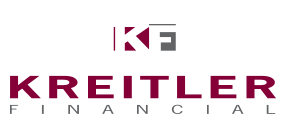It is never too soon to develop a plan that will help you make the most of your retirement years. Employer sponsored retirement plans can be a great way to save for retirement in a tax advantaged way.
Most investors are familiar with the traditional 401(k), which is a retirement savings account funded with pre-tax dollars. The employee may deduct their contribution for an up-front tax benefit and receive a tax benefit in the form of a tax deferral on accumulated earnings until there is a withdrawal. At that time, the recovery of their initial investment and earnings is taxable as ordinary income.
In some cases, employees can invest in their future by making after-tax contributions to a Roth 401(k).
What is a Roth 401(k)?
A Roth 401(k) is a relatively new retirement savings vehicle that was first introduced to the investment world in 2006. Workers fund the account with dollars that have already been taxed. In return, contributions and growth are free of federal income tax when they make a qualified distribution, which is typically after age 59 ½.
One similarity between a Roth 401(k) and a traditional 401(k) is the age that you must take distributions. Generally, participants must begin mandatory Required Minimum Distributions (RMDs) from a Roth 401(k) at age 72. There may be some exceptions to distributions if you are still working.
Who can contribute?
If your employer offers a Roth 401(k) plan, you can contribute regardless of salary level. This provides an opportunity for high earners who aren’t eligible to contribute to a Roth IRA to save for retirement using after-tax dollars.
Some employers will offer to match the amount of your Roth 401(k) contributions, but employer contributions are made directly to your traditional 401(k) on a pre-tax basis.
How much can I contribute?
If your employer offers both, you can choose to split your contributions between your traditional 401(k) and Roth 401(k). However, there are limits to the combined traditional 401(k) and Roth 401(k) contributions. Generally, the limit on employee elective deferrals to both accounts is the lesser of $20,500 or 100% of compensation in tax year 2022. Those aged 50 years or older may contribute an additional $6,500 as a “catch-up” contribution. These limits are subject to change each year for cost-of-living adjustments.
Opportunities
Those who expect to be in a higher tax bracket in the future may wish to consider funding a Roth 401(k) while they are in a relatively lower tax bracket. Over time, those dollars saved in the Roth environment may be worth more than saving pre-tax dollars since the contributions and earnings are exempt from federal income taxes for qualified distributions.
We encourage you to contact us if you are eligible to participate in a 401(k) plan. We can help you understand the retirement savings vehicles available to you and put in place a personalized strategy around your long-term goals such as retirement.
*This content is intended for educational purposes only. It is not meant to be all inclusive of all the benefits and risks of each product discussed. Please contact your financial advisor for more information. Please see the Important Disclosure link below.

